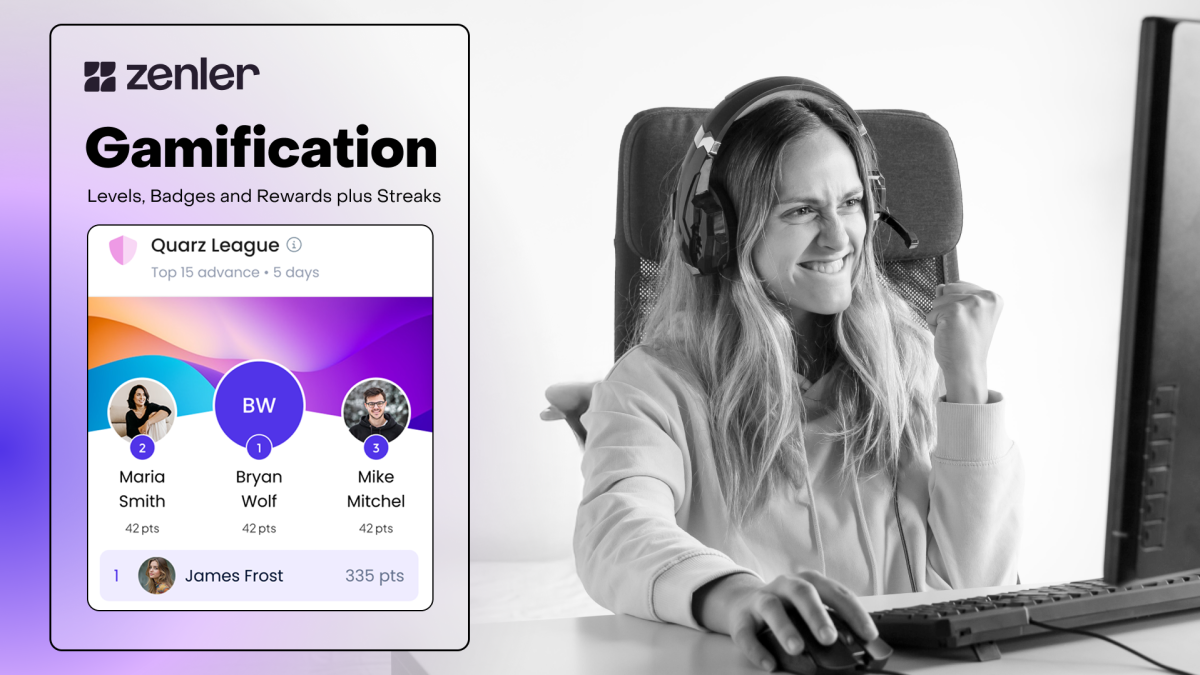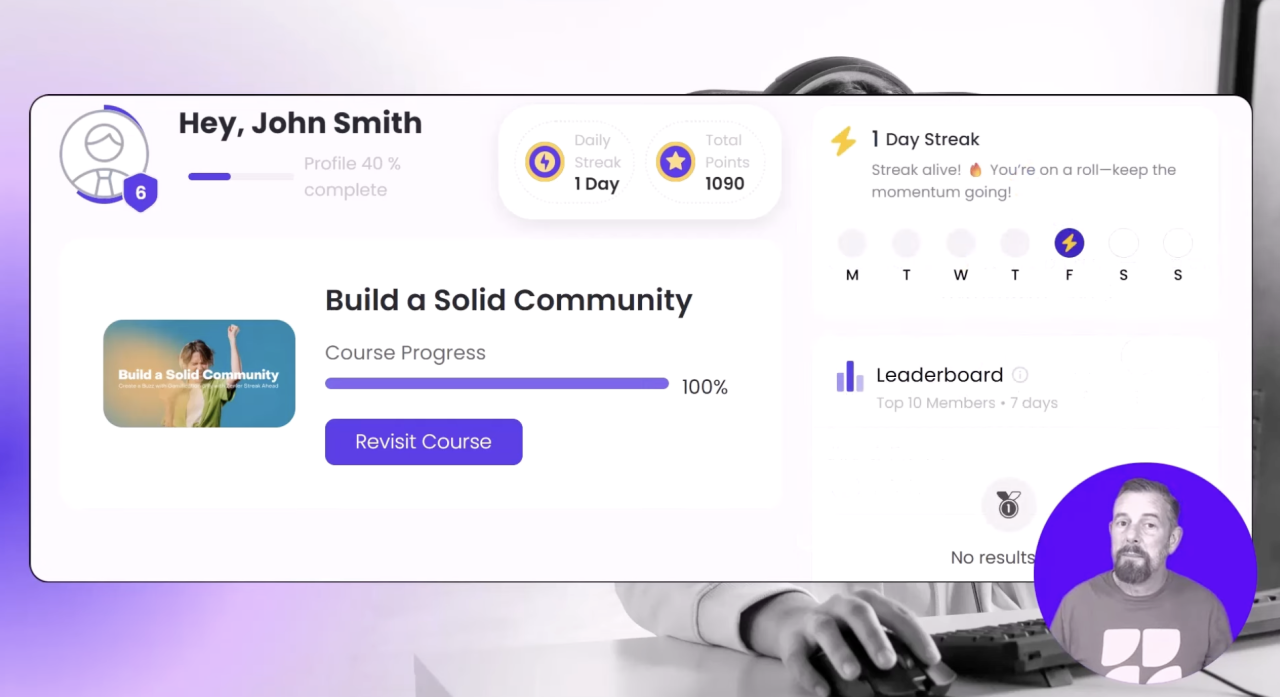How Gamification in Online Platforms Drives Faster Sales and Lead Generation: The Ultimate Guide

I'll be honest—when I first heard about "gamification" for online courses, I rolled my eyes.
It sounded like one of those buzzwords that marketing people throw around at conferences. You know the type.
But here's the thing: I was completely wrong.
After watching dozens of course creators implement game-like features into their platforms, I've seen conversion rates jump by 30-40% in some cases. Students who used to ghost after the first lesson are now completing entire programs. And the best part? They're actually asking to buy more.
So let's talk about what's really happening here, and more importantly, how you can use it to grow your online business faster.
What's Actually Going On With Gamification?
Think about the last time you played a mobile game or used an app like Duolingo. Remember that little dopamine hit when you earned points or leveled up? That's not accidental—it's behavioral psychology at work.
Now imagine applying that same principle to your online course or membership site. Instead of students passively watching videos, they're earning points for completing lessons, climbing leaderboards, and unlocking exclusive content as rewards.
The difference? They stick around. They engage. And eventually, they buy.
Here's what we're seeing in the real world: platforms using gamification report engagement rates nearly 50% higher than traditional setups. Course completion rates—which typically hover around a depressing 15%—jump to 35-40% or higher.
And here's why this matters for your bottom line: a student who completes your course is infinitely more likely to leave a glowing review, refer friends, and buy your next product.
Why Does This Actually Work?
Look, we can talk about dopamine loops and behavioral triggers all day, but let me break it down in plain English.
People hate feeling like they wasted money. When someone buys your course and you immediately start tracking their progress with points and levels, you're giving them visible proof they're getting value. That psychological commitment makes them want to continue.
Nobody wants to quit when they're "almost there." If I'm at Level 3 and Level 4 unlocks a bonus community I've been hearing about, you better believe I'm finishing those last few lessons. This is basic human nature—we hate leaving things incomplete.
Competition is real. Even if we don't want to admit it, most of us like to see our name on a leaderboard. It's the same reason gym mirrors exist. When students see others progressing, it creates social proof and a bit of healthy FOMO.
Where This Gets Interesting for Lead Generation

Okay, so students engage more. Great. But how does this help you actually sell courses in the first place?
This is where it gets clever.
The Free Trial That Actually Converts
Most free trials are pretty passive. Someone signs up, pokes around for a day or two, then forgets about it. With gamification, you can completely flip this script.
Here's what I've seen work really well: Set up your trial so new users immediately start earning points for simple actions—completing their profile, taking a welcome quiz, watching an intro video. Then, at Level 2 (which they can hit in about 15 minutes), unlock access to a small community or bonus training.
Suddenly, your free trial isn't just a trial. It's an experience. Users who reach Level 3 during their trial convert at nearly 4x the rate of passive users. I've seen this play out repeatedly.
Lead Magnets That Actually Lead Somewhere
We've all created lead magnets. You know—the free PDF or email series that sits in someone's download folder forever.
What if instead of a static PDF, your lead magnet was a mini-course with points and progress tracking? Each completed lesson earns points. Finish the whole thing, and you unlock a free consultation or access to an exclusive Facebook group.
Now you've got someone who's:
- Actually consumed your content (instead of downloading and forgetting)
- Invested time and effort (psychological commitment)
- Entered your ecosystem (they're in your community, not just on your email list)
The conversion rates speak for themselves. Gamified lead magnets generate about 60% more qualified leads, according to data from several platforms I track.
Launch Campaigns With Built-In Momentum
Think about a typical product launch. You send emails, maybe run a webinar, and hope people show up and buy.
Now imagine a launch where you're awarding points for attendance, bonus points for early registration, and unlock special pricing tiers as rewards for reaching certain levels. The energy is completely different. People are actively participating instead of passively receiving sales messages.
One course creator I know ran a launch challenge where students earned points for attending training sessions and engaging in the community. The top 20 on the leaderboard got a special discount code. Result? Her highest-converting launch ever, and she built a super-engaged community in the process.
Real Example: How Zenler Built This Right
I recently got access to Zenler's new gamification feature, and honestly, they've thought this through better than most platforms.
Let me walk you through how you could actually set this up for a real business (because theory is nice, but practical examples are better).
Setting Up Your Levels Strategically
Here's a framework that makes sense:
Level 1 - The Welcome Mat
This is where everyone starts. Free users, trial users, everyone. Don't give away the farm here, but give them enough to understand what's possible. Maybe access to one intro module and the basics of your community.
Level 2 - The "Aha" Moment
This should require about 50-75 points—roughly what someone earns from enrolling in a couple courses or actively engaging for a few days. At this level, unlock something valuable but not critical. A bonus training video, an exclusive community channel, or a downloadable resource guide. This level proves to users that the gamification system is real and rewards are worth pursuing.
Level 3 - The Conversion Zone
Around 150-200 points. By now, users have completed some lessons, engaged in the community, and shown real intent. This is your golden opportunity to unlock either a paid course at a special rate or access to a premium community tier. The psychological frame here is important—it's not a sales pitch, it's a reward they've earned.
Levels 4-5 - Premium Territory
These are your loyalty rewards. Users who reach 300-500+ points are your super fans. Unlock your best stuff here—advanced certification programs, private coaching calls, or exclusive mastermind groups. These folks are also prime candidates for your highest-ticket offers.
The Points System: What Actually Matters
Zenler lets you customize point values for different actions, and this is where strategy matters.
Course enrollment? 25 points. That encourages people to try multiple offerings instead of just lurking.
Lesson completion? I'd recommend scaling this—maybe 5 points for shorter lessons, 15 for comprehensive ones. The key is making completion feel rewarding without inflating your economy.
Here's one feature I really like: the 7-day streak bonus. If someone is active for seven consecutive days (completing lessons, commenting in the community, whatever), they get bonus points. This builds habit formation, which is gold for retention.
And here's something smart you can do: award MORE points for purchases than for free actions. A course purchase might be worth 100 points. This creates a status system where paying customers have visible social proof of their investment.
Why Celebrations Actually Matter
This might seem silly, but hear me out. When someone levels up, Zenler triggers a confetti animation with a custom message.
Why does this matter? Because people screenshot these moments and share them on social media. It's organic marketing you don't have to pay for. One of my clients literally got three new sign-ups because a student posted their Level 5 achievement on LinkedIn.
Leaderboards: Handle With Care

Zenler offers three types of leaderboards: 7-day, 30-day, and all-time.
Here's how I'd use them:
The 7-day board is perfect for launch campaigns and challenges. It resets weekly, so everyone has a fresh shot at the top.
The 30-day board works great for membership sites where you want to recognize consistent monthly engagement.
The all-time board? That's for identifying your superfans—the people who might become affiliates, testimonial sources, or case studies.
Pro tip: Don't make your leaderboards purely about points. Consider having separate boards for things like "most helpful community member" or "fastest course completer." Diversifying recognition reduces the competitive pressure and makes the system feel more inclusive.
Getting This Set Up (Without Losing Your Mind)
Look, I know what you're thinking. This sounds complicated.
It's actually not. Let me give you a realistic timeline.
Week 1: Foundation Work
Enable gamification in your platform (on Zenler, this literally takes one click). Then sit down and map out 3-5 levels that align with your actual customer journey. Don't overthink this—you can always adjust later.
Set your initial point values based on what feels right. I usually recommend starting conservative—it's easier to increase point rewards than decrease them later.
Create your unlockable rewards. Mix free value (bonus content, community access) with strategic upsells (paid courses at special rates).
Week 2: Content Creation
This is where you build out the actual rewards and write your celebration messages. Keep these on-brand but enthusiastic. "Congratulations! You've reached Level 3 and unlocked..." works better than you'd think.
Set up your leaderboard parameters and design any visual assets you want users to share when they level up.
Week 3: Launch It
Announce the new system to your existing users. Consider running a "grand opening" bonus point event where everyone gets 25 points just for logging in. This creates immediate engagement.
Set up email sequences that guide new users through the gamification experience. Don't assume it's self-explanatory.
Week 4: Tune and Optimize
Watch your data. Are people getting stuck at a certain level? Maybe the point requirement is too high. Are they blazing through too fast? Adjust accordingly.
Survey your most active users. Ask what's working and what's not. They'll tell you exactly what motivates them.
What to Actually Measure
All this effort is wasted if you're not tracking results. Here's what matters:
Conversion rate changes - Compare your lead-to-customer conversion before and after gamification. This is your north star metric.
Time to first purchase - Are new users buying faster? They should be.
Course completion rates - This should jump significantly. If it doesn't, your point system might not be rewarding the right behaviors.
Churn rate - Engaged users don't cancel. Period.
Referral rate - Happy, engaged students tell their friends. Track how many new sign-ups come from existing user referrals.
What I've Learned Watching This Play Out
After seeing this implemented across dozens of businesses, here are some patterns I've noticed:
Don't make it too complicated. I've seen people create 15 different level tiers with complex point calculations. Nobody cares. Keep it simple.
Make early wins easy. If someone can't hit Level 2 within their first session, you've set the bar too high. Early momentum is everything.
Vary your rewards. Not everything should be course unlocks. Mix in community features, downloadable resources, and recognition opportunities.
Refresh your challenges regularly. Run seasonal point bonuses or limited-time challenges tied to your product launches. Keeps things interesting.
Recognize non-competitive achievements too. Not everyone wants to compete on a leaderboard. Create badges for things like "completed first course" or "helpful community member."
Actually Seeing This In Action
Rather than me describing the entire setup process, Zenler put together a really solid tutorial that shows you exactly how to configure everything I've been talking about.
The video walks through the actual admin dashboard, shows you how to set up levels and points, configure unlockable rewards, and customize the whole experience. It's about 10 minutes and honestly worth watching even if you're not using Zenler—the strategic thinking applies to any platform.
Should You Actually Do This?
Here's my take: if you're running an online course or membership site and you're struggling with engagement or completion rates, gamification isn't optional anymore. It's table stakes.
Your competitors are probably already doing this. Students who experience gamified learning on other platforms are going to expect it from yours.
The good news? It's easier to implement than you think, especially with platforms that have built it in natively (like Zenler).
Try It Yourself
If you want to see how this actually works in practice, Zenler offers a 30-day free trial with no credit card required. You can set up the entire gamification system, test it with a small group, and see the engagement difference yourself.
Start your free trial here: zenler.co/sell
Full disclosure: I'm not affiliated with Zenler, I just think they've built this feature really well. The platform includes course hosting, community features, email marketing, website building, and now gamification—basically everything you need in one place.
Final Thoughts
Look, gamification isn't magic. It won't fix a bad course or make up for lack of value. But if you've already got solid content and you're just struggling to get people to engage with it, this might be exactly what you need.
The psychology is sound. The data backs it up. And the platforms that make it easy to implement are finally here.
The question isn't whether gamification works—it clearly does. The question is whether you're willing to adapt while your market is still figuring this out, or wait until everyone else has already captured the advantage.
What do you think? Have you tried gamification in your online business? I'd genuinely love to hear your experience in the comments below.
Categories: : Zenler Feature Releases
Copyright © 2025 Zenler. All rights reserved.
Terms | Privacy Policy | Cookie Policy | Support
 David Zenler
David Zenler 
